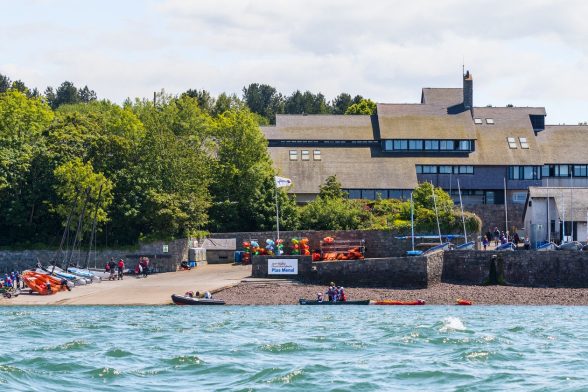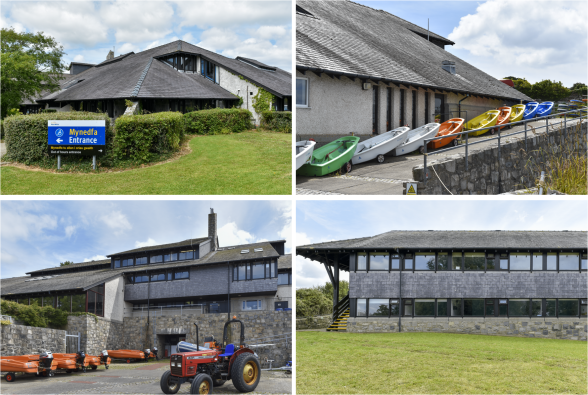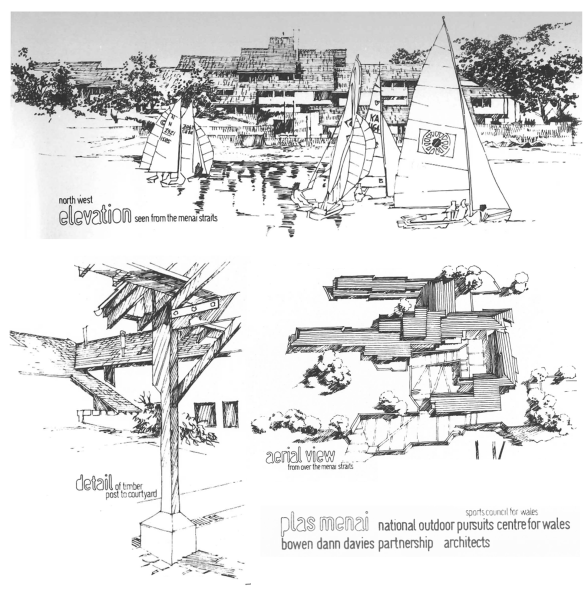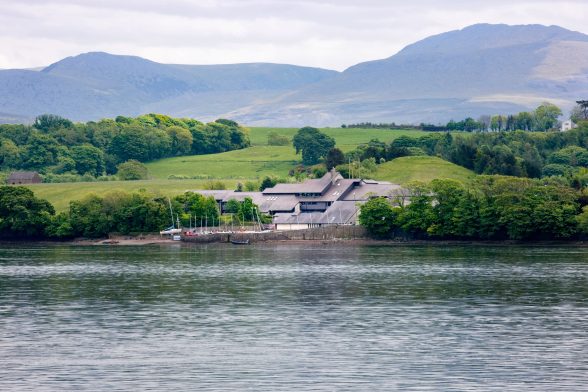This website uses cookies
This website uses cookies to enable it to function properly and to analyse how the website is used. Please click 'Close' to accept and continue using the website.



Image: Sport Wales
C20 Cymru is celebrating its first major listing success following news that Plas Menai – the Welsh National Watersports Centre – has just been awarded Grade II and II* status.
Designed by Bill Davies of Bowen Dann Davies Partnership in 1978-83 for the Sports Council of Wales as a purpose-built national centre for water sports and outdoor pursuits, the complex has been described as ‘the most persuasive built manifesto of the search for a Welsh architecture’ and ‘arguably the most admired and influential building completed in Wales in the last quarter of the twentieth century’ [Professor Richard Weston]
Situated on the Menai Strait between Caenarfon and Bangor, Plas Menai is organised as a cluster of accommodation around two half-open courts that contrast with each other while providing shelter from the often inclement weather. With a form and scale intended to echo the layout of a traditional farmstead, the building has an expansive profile with cascading pitched purple slate roofs, referencing the landscapes of Snowdonia that frame the complex to the south. The roofs were essential to integrating what is a substantial building (at five storeys in some sections) into the vista across the Menai Strait, with their Frank Lloyd Wright-esque emphasis oft noted.

Image: C20 Cymru
The Buildings of Wales cites the ‘delightful’ courtyard of staff accommodation in Plas Menai as ‘a model for how modern housing should be handled’ in plan. This is assisted by the simple palette of materials and traditional details, including roughcast rendered walls, stained timber joinery and roofs that are hipped, lean-to and overhanging in places. The ambience of the interiors has been likened to the insides of wooden cabins, and the building’s associated landscaping has also been praised, including carefully considered tree planting, watercourses and channels. Plas Menai won the Gold Medal for Architecture at the National Eisteddfod in Wales in 1985, along with a RIBA Commendation in 1986.
The accommodation is now used mainly for individuals and groups on training, development and experience programmes, and some refurbishment associated with this change of use took place in 2017-18 and 2019. Concerns regarding sensitivity and appropriateness of some of these works prompted C20 Cymru to submit a listing application to Cadw – the Welsh National heritage body – in August 2021. The listing designation of May 2023 has recognised the main Plas Menai complex at Grade II* and the detached accommodation block at Grade II.

Credit: BDDP
Bowen Dann Davies Partnership
The partnership of Bowen Dann Davies was established in 1970 by S Powell Bowen, Frank Dann and Bill Davies – the last having overall responsibility for the design philosophy and architectural output of the practice. BDDP is regarded as one of the leading practices in Wales of the time and designed prominent public buildings, churches, and housing schemes. Over a fifteen-year period, buildings designed by the practice won some 40 design awards or commendations from seven different national bodies, including four Eisteddfod Gold Medal, one RIBA Award and six RIBA Commendations.
The practice was renowned for its modern, ‘regional’ style of architecture – influenced by vernacular building, the culture of the area and climate – a philosophy that leant heavily on Bill Davies and which influenced many other architects in Wales.
Bill Davies was born in Old Colwyn, Denbighshire in 1934. Leaving school at the age of 15, he joined a local architectural practice and was designing houses by the age of 17. The principal of the practice, Stewart Powell Bowen, recommended him to the University of Manchester, where he studied architecture from 1952 to 1957 where his written thesis on folk building in north Wales proved to be formative, guiding all his later work. Davies worked for the Architects’ Co-Partnership in London in the late 1950s, and was employed by a number of local authorities before rejoining S. Powell Bowen for a period and then working for the Government of Alberta in Canada in the late 1960s.
Davies returned to the UK in the year before the formation of Bowen Dann Davies. Major works by the partnership include the Cefndy Hostel in Rhyl (1975); housing for older people at Hafan Elan, Llanrug (1980); the Roman Catholic Church of St Illtyd (1976), and Capel y Groes, Wrexham (1982). The buildings all take into deep consideration their surrounding environments through careful positioning and use of form and material.
Their largest and most significant project, the partnership completed the Plas Menai National Outdoor Centre in 1982. Davies would go on to work for Wyn Thomas + Partners and Holder Mathias Alcock, as well as to teach as an honorary professor at the Welsh School of Architecture. Davies’s lifetime contribution to Welsh architectural culture was recognized through the award of a commendation in the Dewi-Prys Thomas Prize scheme in 2006.

Image: C20 Cymru
C20 Cymru
Formed in Autumn 2020, C20 Cymru covers the rich and unique twentieth and twenty first century built-heritage of the Welsh nation. Working within a distinct legal framework of a heritage system devolved to the Welsh Government, it supports the national C20 Society with information about notable buildings and potential casework across Wales.
In October 2022 C20 was appointed as a statutory consultee in Wales by Cadw, the Welsh national heritage body, mirroring the role the Society has held in England since 2005. All Welsh local authorities are now formally required to notify the Society of any planning applications for listed building consent and demolition.
With many important buildings already lost or threatened (including the Brynmawr Rubber Factory, Bettws High School and BBC Broadcasting House Llandaff) and few C20 assets with legal protection, a Wales-wide network of individuals and organisations is now being built to share information about the most significant buildings and to help save those most at risk.
Follow @C20Cymru on Twitter and Instagram or contact them directly on C20Cymru@outlook.com
Click here to join the Society and support our vital work by becoming a member.

Become a C20 member today and help save our modern design heritage.